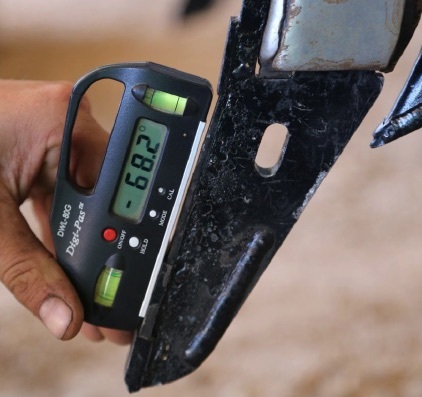Global Wheat and Barley production set to rebound while Corn and Oilseeds set to decline
- By: "Farm Tender" News
- Cattle News
- Nov 24, 2019
- 690 views
- Share

This article is bought to you by Warrick Hay & Grain and Air Seeder Consulting Services.
At the time of writing, according to the United States Department of Agriculture (USDA), global grain and oilseed production is currently forecast to be a net increase in 2019/20 of just nine million metric tonnes (mMT) year on year to nearly 2,500 mMT; however, when looking at specific commodities, wheat and barley are expected to increase, while corn, soybeans and canola production is expected to decrease.
For both wheat and barley, global production is expected to outpace consumption. With lower production of corn, soybeans and canola, consumption is expected to exceed production.
In total, world grain and oilseed stocks are forecast to decrease by 26mMT year on year and although world stocks-to-use ratios have declined, it is only by about one per cent from the previous 2018/19 season and still near record highs at 29 per cent.
Wheat
World wheat production is expected to rebound this year with an increase of 35mMT year on year to 766mMT eclipsing the previous production record of 763mMT in 2017/18.
Most countries are forecast to be increasing production year on year. Of particular note, major exporters – the EU, Argentina, Ukraine and Australia – are expected to have larger wheat crops and the Middle East is on track to have its biggest wheat crop ever of 22mMT, up 26 per cent on last year.
Continuing drought in Australia means that while wheat production is expected to be up on last year's 10 year low, this year's crop may only be just above that.
Argentina is forecast to exceed its record crop of last year, which will be the fourth consecutive record crop for the highly variable exporter.
Dry conditions in parts of Canada are causing production concerns while floods in the US and the extreme heat in the Black Sea and Europe has trimmed expected yield in these regions.
Ad- Warrick Hay & Grain - Professional Grain and Hay Storage - Ad
Ad - Get your Seeder set up the right way. Contact Air Seeder Consulting Services and have your Seeder running right before you start - Ad
Ukraine and Russia have had an excellent season in terms of wheat quality with very little lower quality feed wheat being produced. This will mean the Black Sea will once again be competing with Australia into premium milling markets. However, the reduced supply of lower protein wheat available from the Black Sea region in conjunction with lower corn stocks may stimulate some additional demand for Australian wheat from feed users.
Consumption is also set to increase by 21mMT on the back of increased availability and feed demand as a result of the US corn situation.
Barley
Global barley crops look to be in good condition with production set to increase 10 per cent year on year to 154mMT, the largest crop since the 2008/09 harvest.
In both the EU and the Black Sea the season has gone relatively smoothly. There was some extreme heat just before harvest, luckily, the conditions didn't create major yield or quality issues. Besides the generally low protein in malting barley in the Black Sea, quality in the EU has been good for both malting and feed barley.
Canada has had a mixed year. The hectares sown to barley increased year on year. Dry conditions throughout the growing season have been a concern; however, rain events late in the season seem to have saved many areas. On balance, given hectares have increased, Canada's barley production is predicted to be 10mMT, up 1.6mMT from last year's total of 8.4mMT.
The Argentine barley crop has been sown into good soil conditions although the large premium for wheat over barley has led to a decline in hectares of barley. Expectations are that the crop will be down about 500,000MT on last year.
In Australia, it is currently predicted that barley production will be up slightly on last harvest, with area sown in Western Australia and South Australia up on last year, largely with plantings of new barley variety, Spartacus.
Global consumption is expected to be up year on year, with solid demand anticipated from all the traditional markets. Saudi Arabia is forecast to increase purchases following a year where a series of rain events reduced feed demand.
Ad- Warrick Hay & Grain - Professional Grain and Hay Storage - Ad
Ad - Get your Seeder set up the right way. Contact Air Seeder Consulting Services and have your Seeder running right before you start - Ad
The ongoing anti-dumping investigation in Australia, the effects of the African Swine Fever (ASF) outbreak and global trade wars may be limiting factors for the flow of barley into China and South East Asia. The ready availability of alternate supplies of feed grain such as wheat may also limit the ultimate consumption of barley.
Corn
The US, the world's largest corn producer, has a historically large unplanted area this year as a result of flooding during the planting window. Large parts of the US are experiencing suboptimal conditions and this shows in the estimated fall in production from 366mMT last season to 351mMT for this season.
At this stage, US corn production will be able to cover local ethanol and feed demand and export demand. However, if conditions in the US continue to deteriorate and corn stocks tighten, end users are incentivised via the wheat-corn spread to consider other feed products. This is relevant for cereal producing countries such as Australia with wheat and barley a common alternative to corn for feed.
Oilseeds
Any production uncertainty is generally highlighted at this time of year with the South American and US soybean, EU rapeseed and Australian and Canadian canola crops at key stages of development. At this point in time, global supplies of all oilseeds appear to be comfortable.
Estimated soybean production is expected to be lower for the 2019/20 harvest than last season. The US is typically the world's largest soybean producer; however, due to floods and a large unplanted area, production in the US is expected to be down 20 per cent year on year to 99mMT. Brazil is predicted to take the title of largest soybean producer this year at 123mMT, a record crop for the country, just exceeding the 122mMT produced in 2017/18. Brazil is only at the planting stage of the cycle so the crop estimate is based on hectares expected to be planted and average yields.
Soybean consumption has been impacted by the spread of ASF throughout many parts of the globe, most notably in China, which is home to the world's largest pig herd. Authorities have been forced to destroy large numbers of pigs in an attempt to control the outbreak. The re-build of the herd is expected to take a number of years and as such, demand could remain subdued for some time.
Global supplies of canola appear to be at relatively comfortable levels and although production is set to decrease this season, this is only by approximately 1mMT from about 73mMT last season to 72mMT in 2019/20.
Demand is set to be lower due to the ASF outbreak and the continuing trade war between China, the US and Canada, impacting trade flows of both soybeans and canola.
https://glencoreagriculture.com.au/
Ad- Warrick Hay & Grain - Professional Grain and Hay Storage - Ad
Ad - Get your Seeder set up the right way. Contact Air Seeder Consulting Services and have your Seeder running right before you start - Ad 











Share Ag News Via